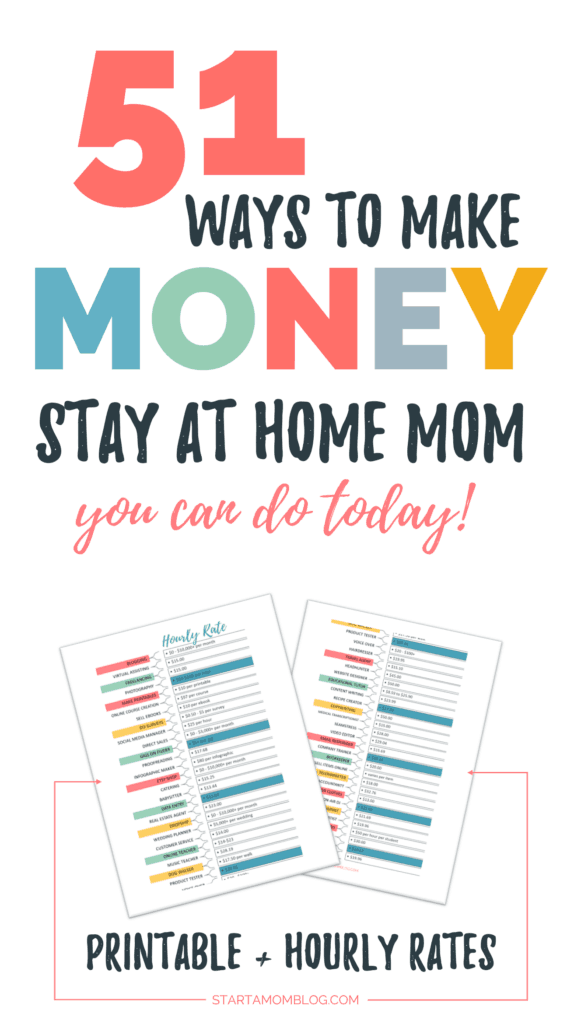Are you a stay-at-home mom looking for a flexible way to earn income? Look no further! We have the perfect solution for you – an easy FBA business on Amazon. With this home-based business, you can make your own hours and work while your kids sleep. No more sacrificing your time with your little ones or juggling multiple responsibilities. This opportunity allows you to stay at home and still be financially independent. Whether you homeschool your children or simply want to have more control over your schedule, this easy FBA business is the answer you’ve been searching for. Get ready to embark on an exciting journey of entrepreneurship and experience the joy of working on your terms.
Understanding Amazon FBA
What is Amazon FBA
Amazon FBA, or Fulfillment by Amazon, is a service provided by Amazon that allows individuals to sell their products on the Amazon platform while Amazon handles the storage, packaging, and shipping of the products to the customers. It is a convenient and efficient way for sellers to reach a wide customer base without having to worry about the logistics of order fulfillment.
How does it work
When you sign up for Amazon FBA, you send your products to Amazon’s fulfillment centers. Amazon then takes care of storing your inventory, picking, packing, and shipping the orders to customers, as well as handling customer service and returns. This means that you can focus on other aspects of your business, such as sourcing products and marketing, while Amazon takes care of the operational side.
Advantages of using Amazon FBA
There are several advantages to using Amazon FBA for your business. Firstly, it allows you to take advantage of Amazon’s vast customer base and its reputation for fast and reliable shipping. This can help you reach a larger audience and increase your sales. Secondly, Amazon FBA handles all the logistics and customer service, saving you time and effort. Thirdly, Amazon FBA offers various tools and resources to help you manage your inventory, optimize your listings, and track your sales and finances. Overall, it provides a streamlined and efficient way to run your e-commerce business.
Potential Challenges in running an Amazon FBA business
While Amazon FBA offers many benefits, there are also some challenges to be aware of. Competition on the Amazon platform can be fierce, so it’s crucial to carefully select your products and differentiate yourself from other sellers. Additionally, Amazon charges various fees for its FBA service, such as storage fees and fulfillment fees, which can impact your profit margins. It’s essential to factor in these costs when pricing your products. Lastly, as with any business, there may be occasional issues with customer returns or negative feedback that need to be addressed promptly and professionally. It’s important to stay proactive and maintain excellent customer service to minimize any potential challenges.
Success Stories of Amazon FBA
Many entrepreneurs have found success with their Amazon FBA businesses. From stay-at-home moms who have been able to earn income while taking care of their children to individuals who have built a thriving e-commerce business, the possibilities are endless. By leveraging the power of Amazon’s platform and utilizing effective strategies, sellers have been able to generate significant profits and achieve financial freedom. With dedication, hard work, and the right approach, you too can create a success story with Amazon FBA.
Starting Your FBA Business
Choosing a Business Model
Before diving into your Amazon FBA journey, it’s essential to choose the right business model. There are various options, including retail arbitrage, wholesale, private labeling, and manufacturing your own products. Each model has its own advantages and considerations, so it’s vital to assess your resources, interests, and goals to determine the best fit for you. Researching and understanding each model thoroughly will help you make an informed decision and set yourself up for success.
Identifying Profitable Keywords
Keywords are essential for getting your products in front of potential customers on Amazon. By conducting keyword research, you can identify the most relevant and high-demand keywords for your products. Tools like Amazon’s keyword tool or third-party software can help you uncover the most popular search terms that customers are using. By incorporating these keywords into your product listings, you can increase your visibility, drive more traffic to your listings, and ultimately improve your sales.
Finding Suppliers and Manufacturers
Sourcing products is a critical step in your Amazon FBA business. Depending on your chosen business model, you will need to find reliable suppliers and manufacturers to provide you with high-quality products. Trade shows, online directories, and platforms like Alibaba can help you connect with potential suppliers. It’s crucial to research and vet suppliers thoroughly, ensuring that they meet your quality standards and can deliver products consistently. Building strong and reliable relationships with suppliers is key to the success of your business.
Amazon FBA Fee breakdown
Understanding the fee structure of Amazon FBA is crucial for setting your prices and calculating your profits. Amazon charges various fees, including monthly storage fees, fulfillment fees, and referral fees. Monthly storage fees are based on the volume of your inventory, and fulfillment fees depend on the size and weight of your products. Referral fees are a percentage of the product’s sale price. It’s important to consider these fees when determining how much to charge for your products and to ensure that your margins are sustainable.

Product Selection for Amazon FBA
Identifying Profitable Products
Choosing the right products to sell on Amazon FBA is a crucial step in building a successful business. Look for products that have a high demand and relatively low competition. Consider factors such as product size and weight, pricing, and profit margins. Tools like Jungle Scout and Helium 10 can provide valuable insights into product trends, sales volumes, and competition. By conducting thorough market research and analyzing the data, you can make informed decisions and select profitable products to sell on Amazon FBA.
Conducting Market Research and Competition Analysis
Market research and competition analysis are essential to understand the demand and competitive landscape for your chosen products. Analyze the sales ranks, customer reviews, and pricing of similar products to gauge the market demand. Keep an eye on the competition and identify opportunities to differentiate yourself. By understanding the market and competition, you can position your products effectively and develop compelling marketing strategies.
How to source products
Sourcing products for your Amazon FBA business can be done through various channels. If you’re starting with retail arbitrage, you can visit local stores to find discounted or clearance items that you can resell on Amazon. Wholesale sourcing involves partnering with authorized distributors or manufacturers to purchase products at a discounted price. Private labeling allows you to create your own brand by sourcing products from manufacturers and adding your label. Understanding your business model will help you determine the most suitable sourcing strategy for your products.
Product listing optimization
Optimizing your product listings is crucial for visibility and conversions on Amazon. Start by creating compelling and informative product titles that include relevant keywords. Write detailed yet concise product descriptions that highlight the features, benefits, and uses of the product. Include high-quality product images that showcase the product from different angles. Customer reviews and ratings also play a vital role in driving sales, so encourage customers to leave feedback and respond to any negative reviews promptly. Continuously optimizing your listings based on customer feedback and data insights will help improve your rankings and conversions.
Account Setup and Product Listing
Setting up your Amazon Seller account
To start selling on Amazon FBA, you need to create an Amazon Seller account. Choose between an Individual or Professional selling plan, depending on your volume of sales. Provide the required information, including your business name, address, and bank account details. Once your account is set up, you can access the Seller Central dashboard and start managing your inventory, orders, and listings.
Creating your first product listing
To list your products on Amazon, navigate to the Inventory tab in Seller Central and select “Add a Product.” Search for your product using its ASIN, UPC, or title, and select the appropriate match. Fill in all the required product information, such as title, brand, and price. Add high-quality product images and write persuasive product descriptions using relevant keywords. Amazon provides guidelines to ensure compliance with their listing policies, so make sure to review them before submitting your product listing.
Optimizing Product listings
Optimizing your product listings can significantly impact your visibility and sales on Amazon. As mentioned earlier, using relevant and high-demand keywords in your titles, bullet points, and product descriptions is crucial. Additionally, consider using enhanced content features such as Amazon A+ Content or Enhanced Brand Content to provide a more engaging and informative shopping experience for customers. Regularly monitor your competitors’ listings and make necessary adjustments to stay competitive and improve your rankings.
Understanding Amazon’s Fulfillment Process
Once your products are successfully listed, Amazon takes care of the fulfillment process. When a customer places an order, Amazon picks, packs, and ships the products from its fulfillment centers. They also provide customer service and handle any returns or exchanges. This streamlined process allows you to focus on other aspects of your business, knowing that the operational side is being handled efficiently by Amazon.

Inventory Management and Order Fulfillment
How to manage inventory on Amazon FBA
Proper inventory management is crucial for maintaining a healthy and profitable Amazon FBA business. Amazon provides tools and reports in Seller Central to help you monitor your inventory levels and forecast demand. It’s important to optimize your inventory by regularly analyzing sales data, identifying slow-moving or excess inventory, and adjusting your ordering strategies accordingly. By maintaining optimal inventory levels, you can minimize storage costs, avoid stockouts, and ensure timely order fulfillment.
Order fulfillment process
Amazon handles order fulfillment through its vast network of fulfillment centers. When a customer places an order, Amazon picks the products from the shelves, packs them securely, and ships them to the customer’s address. They also provide tracking information to customers so they can monitor the status of their orders. As an Amazon FBA seller, you don’t have to worry about the logistics of order fulfillment, allowing you to focus on growing your business and providing excellent customer service.
Returns and Customer Service
Occasionally, customers may need to return or exchange a product they purchased from you. Amazon FBA takes care of the returns process, including issuing refunds and handling any customer inquiries. However, it’s important to monitor and address any customer returns promptly to maintain customer satisfaction and minimize negative feedback. Providing excellent customer service and promptly resolving any issues will help build a positive reputation for your business.
Scaling up your Amazon FBA business
Once you have established a successful Amazon FBA business, you may want to consider scaling it up further. This can be done through various strategies, such as introducing new products, expanding into different marketplaces, or utilizing Amazon’s advertising options. It’s crucial to carefully plan and execute your growth strategies, ensuring that you have the necessary resources, inventory management strategies, and marketing campaigns in place to support your expansion. By continuously evaluating your business and exploring new opportunities, you can take your Amazon FBA business to new heights.
Marketing your Amazon FBA Store
Setting up PPC campaigns
Amazon offers a pay-per-click (PPC) advertising platform called Amazon Advertising. This allows you to create targeted ad campaigns to increase the visibility of your products and drive traffic to your listings. You can set your budget, select relevant keywords, and create compelling ad copy to attract potential customers. Monitoring the performance of your campaigns and optimizing them based on data insights will help you maximize your return on investment and increase your sales.
Leveraging Amazon SEO
Optimizing your product listings for Amazon’s search engine is crucial for improving your visibility and organic rankings. As mentioned earlier, using relevant keywords in your titles, bullet points, and product descriptions is essential. Additionally, consider utilizing backend search terms to include additional keywords that may not fit in the visible product listing. Regularly monitoring and optimizing your listings based on search term performance and customer feedback will help improve your rankings and increase your organic traffic.
Using Social Media to drive traffic to your listings
Social media platforms can be powerful tools for promoting your Amazon FBA products and driving traffic to your listings. By creating engaging content and building a strong social media presence, you can attract potential customers and generate interest in your products. Platforms like Facebook, Instagram, and YouTube allow you to showcase your products, provide valuable information, and even run targeted ad campaigns. It’s important to consistently engage with your audience, respond to comments or inquiries, and build a community around your brand.
Utilizing Amazon’s Promotional Tools
Amazon offers various promotional tools to help boost your sales and increase visibility. These include Lightning Deals, Coupons, and Product Promotions. Lightning Deals are limited-time offers that appear on the Amazon Deals page, Coupons allow customers to apply discounts to their purchases, and Product Promotions offer discounts when customers buy multiple items. Utilizing these tools strategically can help drive sales, attract new customers, and increase your product rankings.

Financial Management for Amazon FBA
How to set realistic financial goals
Setting realistic financial goals is crucial for the success of your Amazon FBA business. Start by assessing your current financial situation, understanding your expenses, and determining your desired level of income. Consider factors such as sourcing costs, Amazon fees, marketing expenses, and other operational costs. Set both short-term and long-term goals that are specific, measurable, achievable, relevant, and time-bound (SMART). Regularly monitor your financial performance, adjust your strategies as needed, and celebrate your milestones along the way.
Understanding Amazon FBA costs
Understanding the costs associated with Amazon FBA is essential for accurate financial planning. Amazon charges fees for various services, including storage, fulfillment, and referral fees. These fees can vary based on factors such as the size and weight of your products, the time of year, and the fulfillment options you choose. It’s important to factor these costs into your pricing strategy and ensure that your profit margins are sustainable. Regularly review your fees and seek opportunities to optimize your expenses.
Keeping track of expenses and sales
Accurate financial record-keeping is crucial for monitoring the health of your Amazon FBA business. It’s important to keep track of your expenses, including sourcing costs, Amazon fees, marketing expenses, and any other operational costs. Additionally, regularly monitoring your sales and revenue will help you assess your business’s performance and identify areas for improvement. Utilize accounting software or spreadsheets to maintain organized records and make it easier to analyze your financial data.
How to mitigate financial risks
Running any business involves financial risks that need to be managed effectively. With Amazon FBA, some potential risks include fluctuating demand for certain products, unexpected increases in Amazon fees, or disruptions in the supply chain. To mitigate these risks, it’s important to diversify your product offerings, continuously monitor and adjust your pricing strategy, and maintain good relationships with your suppliers. Additionally, having a contingency fund or access to credit can provide a safety net in case of unexpected expenses or temporary financial difficulties.
Balancing FBA Business with Family Duties
Creating a work schedule that doesn’t conflict with family time
One of the advantages of running an Amazon FBA business is the flexibility it offers. As a stay-at-home mom, it’s crucial to create a work schedule that allows you to balance your family responsibilities with your business. Allocate specific time slots during the day or week when you can focus on your business tasks while ensuring that you have dedicated family time. Communicate your schedule with your family members and make sure they understand your work commitments. By creating a well-defined schedule, you can effectively manage your time and maintain a healthy work-life balance.
How to operate your Amazon FBA business while your kid’s sleep
Running an Amazon FBA business while your kids sleep can be an effective strategy to maximize your productivity. Utilize the evening hours or nap times to work on tasks that require focus and concentration. This can include activities such as product research, inventory management, or listing optimization. By utilizing these quiet periods, you can make the most of your available time and ensure that you’re making progress with your business.
Using downtime efficiently
As a stay-at-home mom, you may have pockets of downtime throughout the day. Instead of letting these moments go unused, leverage them to work on smaller tasks related to your Amazon FBA business. This can include activities such as responding to customer inquiries, monitoring sales performance, or engaging with your social media audience. By using your downtime efficiently, you can make progress with your business even during those shorter, less structured periods.

Frequently Asked Questions about Amazon FBA
Common concerns for beginners
As a beginner in the Amazon FBA world, you may have common concerns or questions. Some of the most frequently asked questions include:
- How do I find profitable products to sell on Amazon FBA?
- What are the startup costs associated with starting an Amazon FBA business?
- How long does it take to start making sales on Amazon FBA?
- What are the risks involved in selling on Amazon FBA?
- How do I handle returns and customer service?
Dealing with common issues
Running an Amazon FBA business comes with its own set of challenges and issues. Some common issues include:
- Inventory management and avoiding stockouts
- Dealing with negative feedback or returns
- Managing pricing strategies in a competitive market
- Understanding and optimizing Amazon’s search algorithm
- Balancing the demands of the business with family responsibilities
Finding support and resources
Fortunately, there are various resources and support available for Amazon FBA sellers. Online communities and forums allow you to connect with other sellers, share insights and experiences, and seek advice. Amazon also provides extensive documentation, tutorials, and webinars to help sellers navigate the platform and find answers to their questions. Additionally, there are numerous e-books, courses, and podcasts available that provide valuable guidance and strategies for running a successful Amazon FBA business.
Expanding Your FBA Business
Strategies to scale up
Once you have established a successful Amazon FBA business, you may want to explore strategies to scale up and expand your reach. Some effective strategies include:
- Introducing new product lines or variations
- Expanding into different Amazon marketplaces, such as international marketplaces
- Implementing effective marketing campaigns, including PPC advertising and social media promotions
- Building a brand outside of Amazon through a website or other sales channels
- Exploring partnerships or collaborations with other businesses to reach new audiences
Cross border selling on Amazon
Cross border selling on Amazon refers to selling your products in international marketplaces. This can be a great opportunity to reach new customers and expand your business globally. However, it’s important to understand the legal and logistical considerations, such as customs regulations, international shipping, and currency conversions. By carefully planning and executing your cross border selling strategy, you can tap into new markets and drive further growth for your Amazon FBA business.
Utilizing other platforms for business expansion
While Amazon FBA provides a robust platform for e-commerce, there are also other online marketplaces and platforms you can explore to expand your business further. Selling on platforms like eBay, Shopify, or Walmart Marketplace can help you reach a broader customer base and diversify your sales channels. It’s important to research and understand the requirements and fees associated with each platform to determine the best fit for your business. By utilizing multiple platforms, you can reduce reliance on a single marketplace and increase your business’s resilience.
In conclusion, Amazon FBA offers a tremendous opportunity for stay-at-home moms and entrepreneurs to build a successful e-commerce business from the comfort of their homes. By understanding the ins and outs of Amazon FBA, choosing the right products, optimizing your listings, managing your finances, and leveraging marketing strategies, you can create a thriving Amazon FBA business that allows you to earn income while balancing your family duties. With dedication, hard work, and the support of the Amazon FBA community, you can turn your entrepreneurial dreams into reality. Good luck on your Amazon FBA journey!

